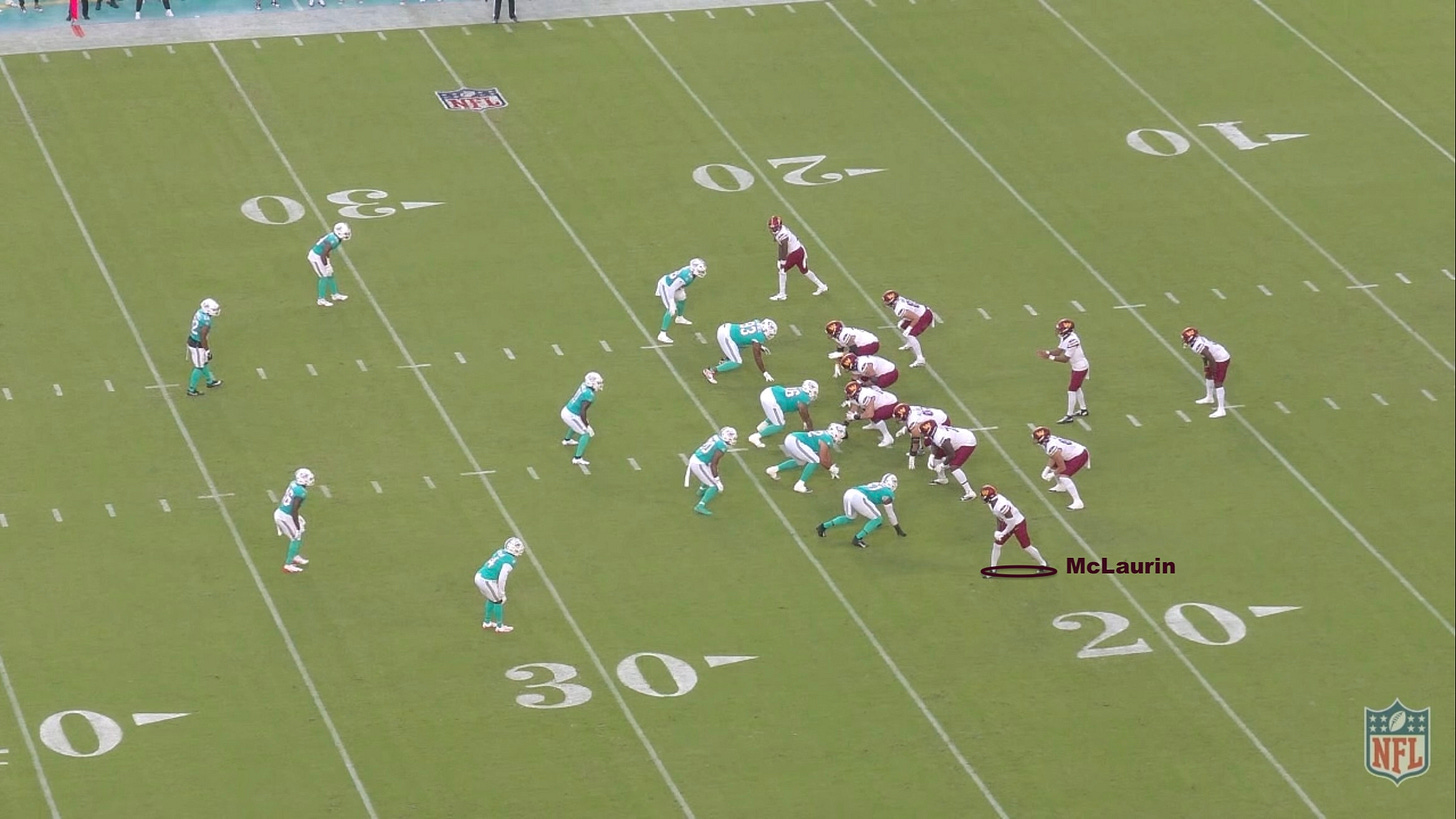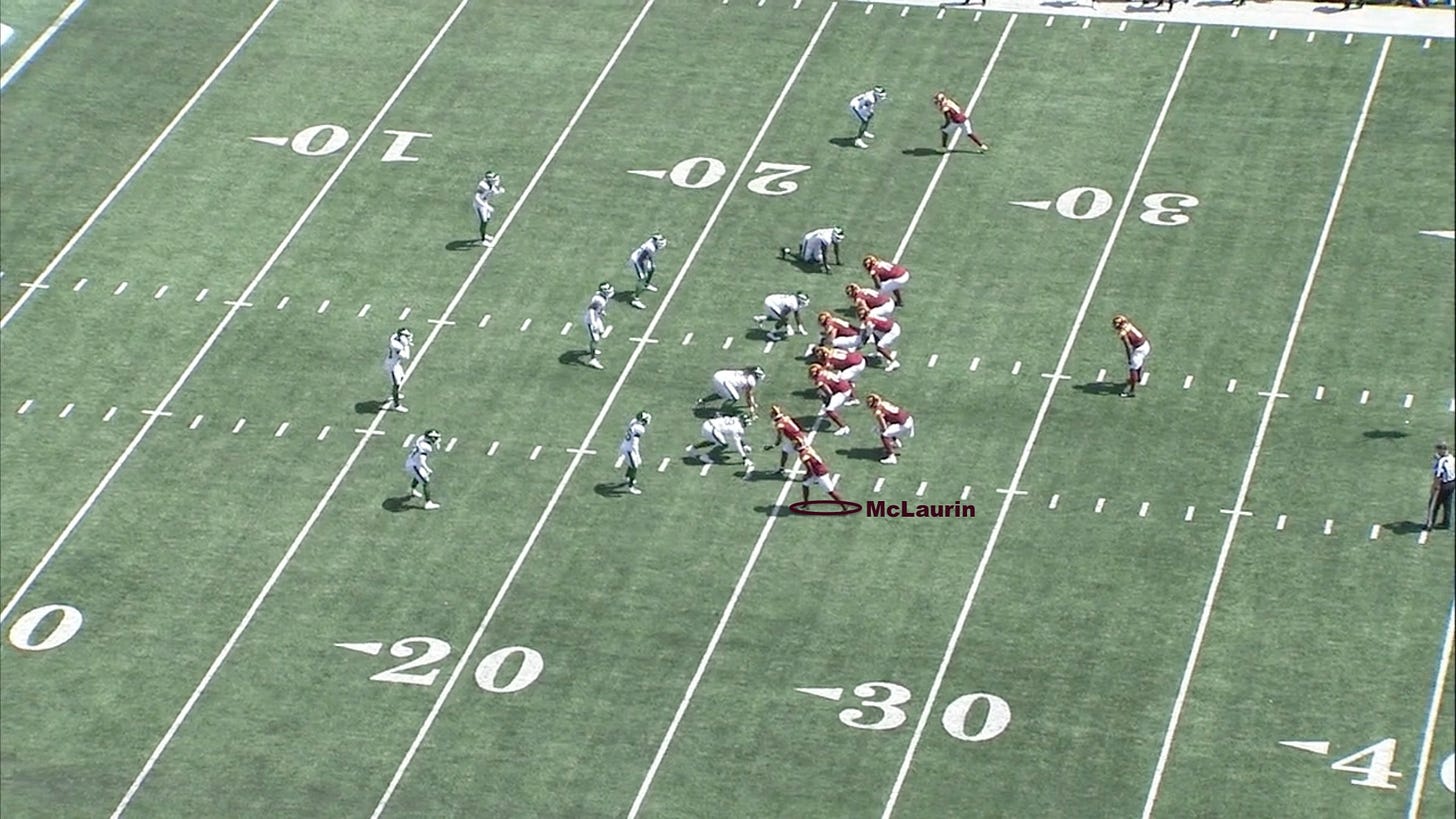Examining common criticisms of Kliff Kingsbury’s offense
Breaking down some of the common criticism of Kingsbury’s offense and why he continues to do things his way
There has been some talk and criticism doing the rounds this week with regards to Commanders offensive coordinator Kliff Kingsbury. There are a lot of talking points people bring up with Kingsbury’s offense since his days with the Cardinals, some valid, some not so much. With some of those points coming back into the discourse this week, I thought I’d take a closer look at them and break down why Kingsbury continues to do things that many people are often critical about.
Inspiration for this post comes from Ian Hartitz of FantasyLife.com. He recently posted an article looking at preseason trends to watch for fantasy football and had a section titled “Kliff Kingsbury gonna Kliff Kingsbury”. In this section, Hartitz points out plenty of factual and valid critiques of Kingsbury’s offensive system. So let’s go through his list and try to find out why Kingsbury does what he does.
Stationary Alignments
The first critique of Kingsbury’s offense is stationary alignments and formations. Hartitz uses a great example with Terry McLaurin. Per Hartitz, McLaurin has lined up as the offense's left outside WR on 28 of his 29 snaps in preseason so far. Generally teams like to take their best receiver and move him around to try and generate the best possible matchups for him, but clearly Kingsbury prefers his receiver to line up in a similar spot more often than not.
As Hartitz points out, this isn’t necessarily a bad thing. DeAndre Hopkins was deployed in a similar way under Kingsbury in Arizona and put up 115 catches for 1407 yards and six touchdowns in his only full season under Kingsbury. In total, Hopkins played 35 games over three seasons under Kingsbury. He managed 221 catches for 2696 yards and 17 touchdowns during that spell, averaging 6.3 catches per game, 77 yards per game and 0.48 touchdowns per game. Stretch those averages out across a 17-game season and you’d have a 107-catch, 1309-yard, eight-touchdown receiver on average. Those are very healthy and productive numbers from a top receiver, despite lining up as the outside left receiver for the vast majority of snaps.
Kingsbury’s system is pretty unique in this regard. Most offenses in the NFL have a defined role for the X receiver (typically a bigger body guy that can win isolated one-on-one matchups, think DeAndre Hopkins) and the Z receiver (maybe someone a bit quicker and more of a vertical threat, think DeSean Jackson). Each formation and play could move those receivers around the field pretty drastically. Instead, Kingsbury prefers to keep his two outside receivers on the same side. Terry McLaurin gave a good explanation for this earlier in the offseason.
”The unique part about our offense is I don’t think necessarily you play the X or the Z because depending on the formation or the hash, you can be the opposite. You can be the X but then [the formation is] to the field, now you’re the Z.” McLaurin explained “If I’m on the left hash, technically I’m the X, I’m in the boundary but if we’re on the right hash, I’m still on the left side. I’m really the Z in the concept because I’m to the field, I’m to the strength of the tight end.”
So what does this look like on the field exactly?
This is a great example of what you would typically expect from an X receiver in a typical NFL offense. The Commanders line up in a three by one formation with three receivers to the right and one single receiver, the X, isolated to the left. McLaurin is the X receiver in this case because the Commanders trust him to win one-on-one on the back side of a concept. This play shows why they trust him to do that. He runs a stop route and breaks away from his defender, giving Jayden Daniels an option to throw outside for a first down. McLaurin then breaks a tackle and bursts up the sideline for lots of additional yards after the catch.
However, you’ll notice the Commanders have the ball aligned on the left hashmark. The alignment of the ball relative to the field is important here. You might have heard of field and boundary cornerbacks, but for those that don’t know, the side of the field that the ball is lined up on is known as ‘the boundary’. This is because there is less space and the ball is closer to the boundary or the sideline. The other side of the field is known as ‘the field’ because there is more field to work with. So on this occasion, because the ball is on the left hash, McLaurin becomes the X or boundary receiver. So what happens if the ball is on the right hash?
This is a play from the same game. It’s the same personnel group on the field and a very similar three by one formation, but this time the ball is placed on the right hashmark. As a result, there is more space to the left side, so the tight end and slot receiver align on that side of the field. McLaurin stays on the left side of the field, but instead of being the X receiver, he effectively becomes the Z receiver in the concept that they are running because he’s on the field side rather than the boundary side. That in turn means that Dyami Brown, who lines up on the right side, shifts from being the Z receiver on the previous play, to the X receiver on this one. Brown runs a similar route that we saw from McLaurin on the previous play and Daniels finds him for another completed pass.
Now, you could argue that you would always want McLaurin to be the boundary receiver isolated on the back side of a formation to give him as many one-on-one matchups as possible. I don’t necessarily disagree with that opinion, that is the way most NFL offenses work after all. But there are advantages to this style too. Kingsbury’s offense is all about tempo (I’ll dive into the tempo stuff in more detail later on), so having the two outside receivers being able to stay on the same side allows them to get lined up quicker without having to huddle and move everyone around. Instead, the only people really moving are the tight end and slot receiver, who are both closer to the formation anyway.
It also opens up a wider variety of routes for the outside receivers, as McLaurin also explained.
”One thing that has really stood out is the complements of our routes that we have. We have a chance to run similar stems, but there’s different routes off those stems. For a receiver like myself, you get a really good look at DBs and they study your film, they study your splits. Having routes that look the same but break off at different angles is extremely important because it feels like you have some versatility in your bag to go out with, versus like, you’ve got this hitch again, you’re back side, that’s all you got.”
What McLaurin is explaining there is that as the X receiver on the back side of a formation, like we saw in the first clip, his route tree is often quite limited. Opposing defensive backs can study splits and alignments and start to get tendencies for what routes he might run in certain situations. But in this system, the X receiver can become the Z receiver depending on the position of the ball. So suddenly, that opens up an entire new route tree for opposing corners to try and deal with.
Besides all that, it’s not like McLaurin has lined up in the exact same spot on the field every single play in preseason. Sure, he’s played as the outside left receiver on the vast majority of snaps, but the outside left receiver isn’t always outside the numbers.
Here we can see McLaurin lining up as the outside left receiver, but not in the same positions that we’ve already seen. In the first picture, McLaurin lines up in a condensed split. Yes he’s still the outside left receiver, but he’s much tighter to the formation which opens up a lot more routes for him. In the second picture, McLaurin is the outside left receiver, but as part of a bunch formation that is tight to the formation. With him being part of the bunch, McLaurin’s route tree becomes a wide range of possibilities given the other two receivers in the bunch can release outside and switch spots with him at the snap.
So that hopefully explains why Kingsbury often has his top receivers, like Terry McLaurin, constantly lining up as the outside left receiver. Let’s move onto the next topic.
No Motioning
Another big criticism of Kingsbury’s offenses is the lack of pre-snap motion. Per Hartitz, the Commanders currently rank 32nd in shift/motion rate, using a shift or motion on just 10.6% of their snaps in preseason games so far. The best offenses in the NFL use lots of pre-snap motion to try and get a pre-snap indicator of what the defense is intending to do. You’ll undoubtedly have heard of man/zone indicators, where an offense will bring a receiver in motion across the formation and if a corner follows him, it’s a good indication that the defense is playing man coverage, while if nobody follows him or the coverage rotates and a safety drops down from the other side, it’s a good indicator of some form of zone coverage.
Keep reading with a 7-day free trial
Subscribe to Bullock's Film Room to keep reading this post and get 7 days of free access to the full post archives.



